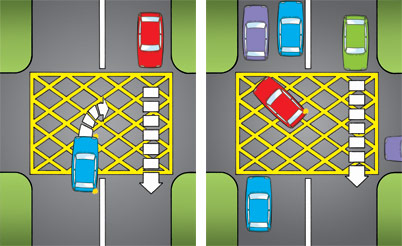Getting out of a skid
Anyone can get into a skid, but, how many can cope? There is a way out, so, should it happen to you, don’t close your eyes and wait for the bang!
According to Met Eireann, the average number of days in the year when snow is lying on the ground is 5. (This winter may up that statistic!) Probably, the better way to deal with icy or snowy roads is to stay off them: don’t make the journey unless its urgent.
The vehicle and road may contribute to skidding, but the main contributor is the driver. There are three types of skid which are caused by the following –
1. Excessive speed for the existing road conditions or traffic situation.
2. Excessive acceleration, braking or cornering sharply.
3. A combination of both of the above.
So, a skid occurs when you change speed or direction so suddenly that the tyres cannot keep their grip on the road. There’s increased risk of skidding as the driver slows down, speeds up, turns a corner or drives uphill or downhill.
A rear wheel skid occurs when the rear wheels lose their grip which can be caused by any of the aforementioned factors. This type of skid is easily recognised because the rear of the car slides away from the centre of the road or corner. If not corrected, the vehicle may turn around completely on the road. To correct this problem, release the accelerator and footbrake, turn the steering wheel in the same direction as the skid. Unless your vehicle has anti-lock braking system (ABS), the brakes should be reapplied immediately after release and continue that process until control is regained. Care should be taken not to oversteer, particularly in the case of radial tyres as this could cause the vehicle to spin in the opposite direction. ABS brakes will allow you to steer on slippery surfaces because it applies and releases the brakes to maximum effect without locking the wheels; therefore, with ABS, the foot may be kept firmly on the brake pedal in a skid situation.
The front wheel skid occurs when the front wheels lose their grip, leaving the driver with no directional control. It occurs as a result of turning sharply into a bend at excessive speed or under hard acceleration or braking. The vehicle simply cannot go in the direction in which it is being steered. Should time permit, the skid may be corrected by momentarily straightening the front wheels and/or reducing pressure on the accelerator or brake.
The four wheel skid occurs when all four wheels lose their grip. It similarly occurs as a result of excessive speed or braking. The vehicle may be similarly taken out of that skid by releasing the brake temporarily, reapplying again, unless you have ABS and turning the steering in the direction of the skid.
Progressive braking in good time can prevent all those situations arising. Be alert, read the danger signs and road markings; judge distance; observe the traffic volume but of all, respond to road and weather conditions. Stopping distance in ice or snow may be increased 10 fold. Gradual acceleration and staying in a higher gear than usual is required; slightly deflated tyres helps to reduce skidding. Don’t mix cross-ply and radial tyres on the same axle, but, if you do mix them, fit the cross-ply to the front and radials to the rear. Beware of black ice, you cant see it: its ‘noiseless.’ Be attentive to fallen leaves, shady areas, exposed bridges – they thrive on little frost. Ironically, frost and snow slows us all up and helps prevent accidents. We should do likewise in the sun!
 We use a 1.4 litre Toyota Yaris.
We use a 1.4 litre Toyota Yaris. 